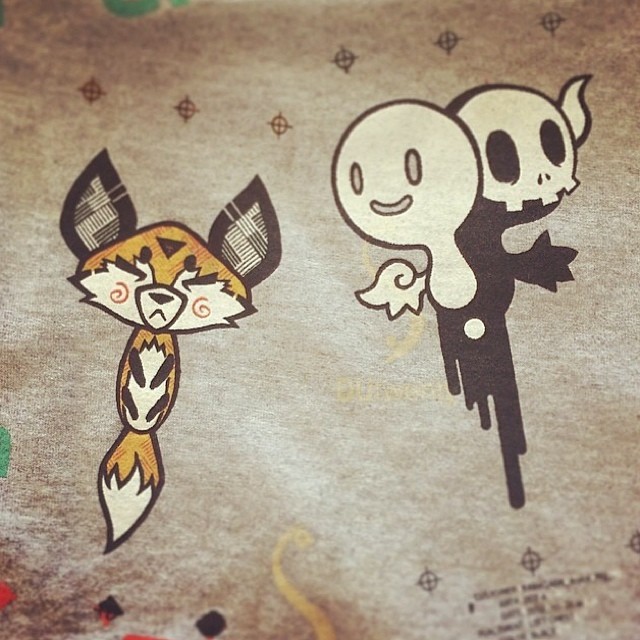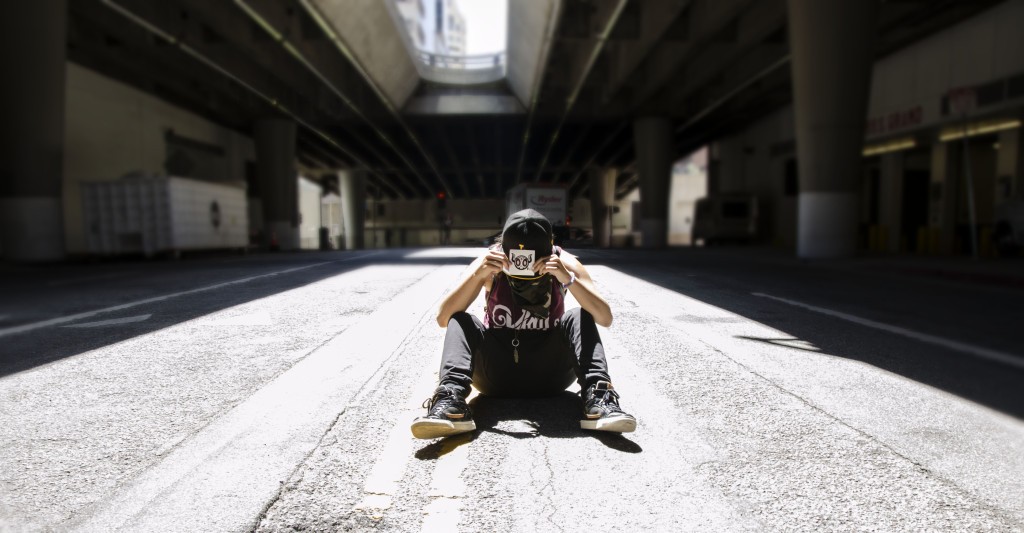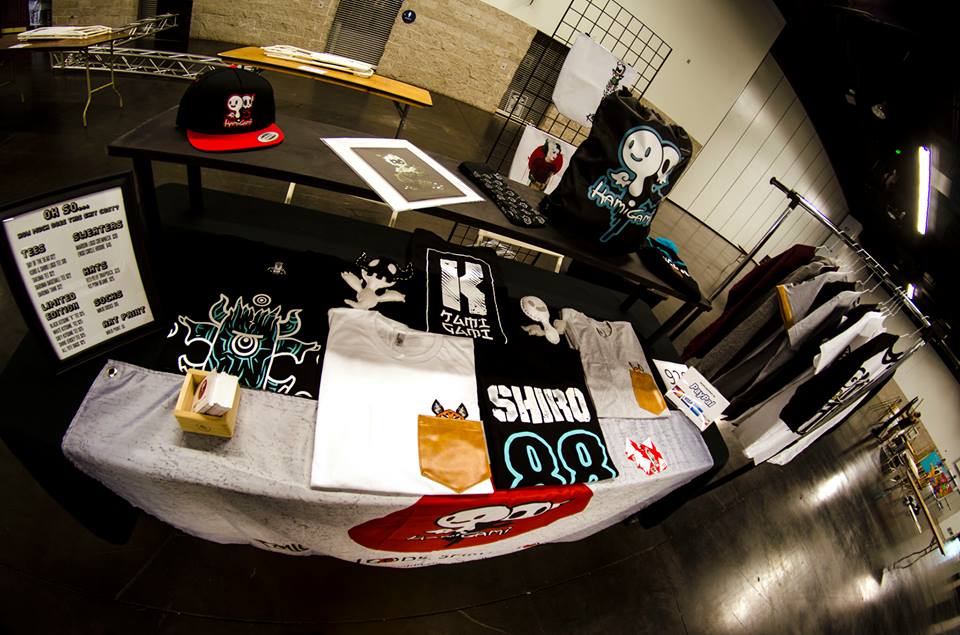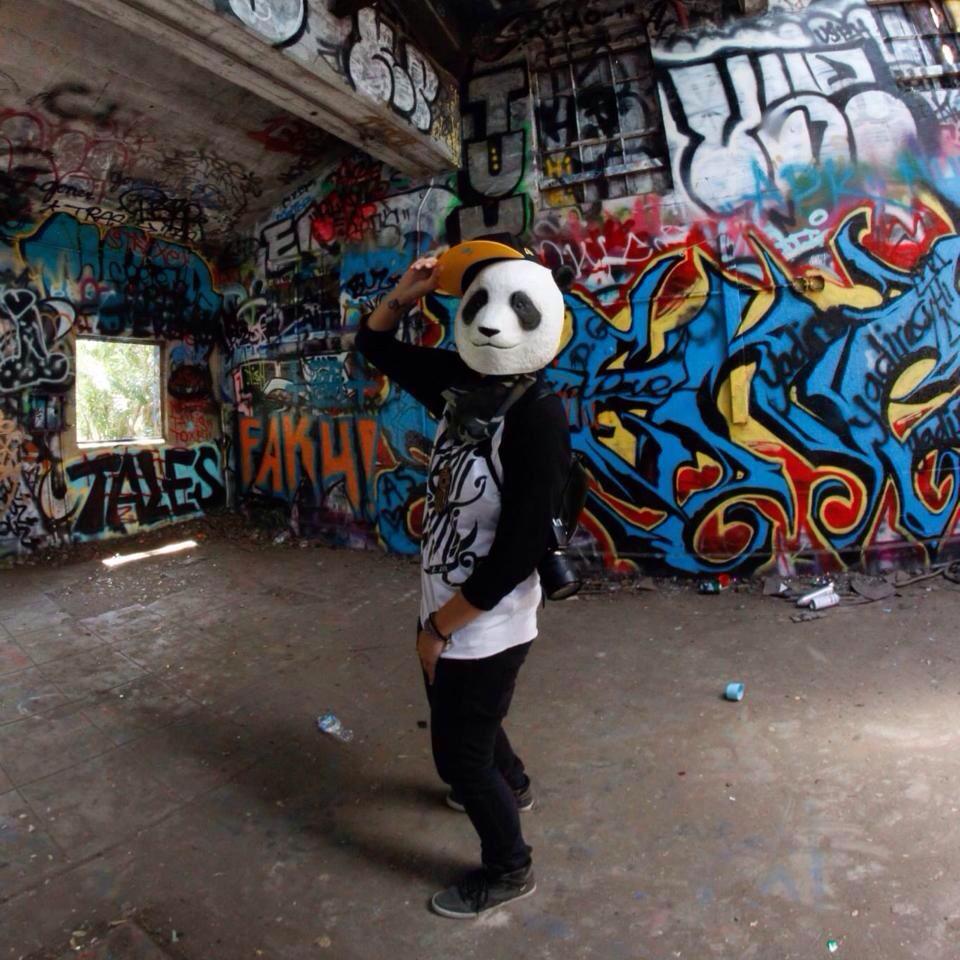Kamigami is a streetwear clothing and art company where Japanese mythology meets the Los Angeles urban art scene. Meaning “all the little gods” in Japanese, Kamigami takes inspiration from the Shinto belief that thousands of spirits roam the earth. I recently sat down with founder Joyce Ng to learn more about the artist, entrepreneur, and altogether super down-to-earth badass behind the company. What struck me most throughout the interview was her candidness; Ng sugarcoats neither her struggles nor her advice to young Asian American entrepreneurs, leading for a refreshingly honest conversation.
Upon graduating from animation school, Ng was in a state of flux, confusion, and, wait for it, student debt. It was that gut-wrenching time of soul-searching, job-hunting, and rejection that many of us recent grads are all too familiar with.

It was around the same time when she was introduced, through a friend, to a series of group events where musicians, artists, and poets gathered to share their art with other like-minded individuals. Inspired by the passion she saw in the artists, she began to think about starting her own company. “I thought, I can do this. I designed T-shirts before; I worked at an art gallery. Why don’t I put all the skills I have into something of my own?” says Ng.
She pitched her idea to start a brand to her best friends: fellow artist Franky and musician Thomas. Soon after, she and Franky sat down at a local McDonald’s and started throwing out ideas and pounding out character designs. “With my crazy imagination and Franky’s crazy imagination, we kept drawing. I’d just go to his house and we’d draw for days and stick them up on the wall,” says Ng. Gaining inspiration from a friend who proposed the name kamigami, she began to study Japanese mythology, utilizing her research as the basis for her character designs.
Turning ideas into sales was a whole different monster to battle, however. Ng recounts her naivety as she entered the business.

“When I first started this company, I thought that I was going to sell T-shirts, it’s going to sell, I’ll put them online, and it’s just going to happen. I didn’t think about the business portion. That was a whole part that I was missing. I ended up borrowing quite a lot of money from my mom, and took quite a lot of money out of my own pocket. Thomas did as well. We sold a couple, but we also gave a lot away…. We were giving away more shirts than we were selling.”
After multiple failures of trying to screen print by themselves, sleepless nights, and a hundred dollars down the drain, Ng came to the conclusion to never be afraid to ask for help nor to be afraid to hire others who know what they’re doing.
The team eventually turned to Grow Your Own Media, a company that specializes in producing small batches of shirts. “They were so helpful and extremely informative so I decided to print my first shirts there – which came out awesome by the way,” Ng says with a laugh. “I wanted to wear every single shirt and create even more. It created such an adrenaline rush to see your work finalized.”
Armed with their first batch of shirts, Kamigami held their first photoshoot in Venice Beach. It was on to the next step then, and the team took to Kickstarter, a global crowdfunding platform for creative ventures.
Ng thinks back to her experience with Kickstarter, “It taught me so much about marketing and selling my brand. I made so many mistakes with that – with companies, printing, time, customers, but I’m glad I gave it a try.” She laughs, “I don’t know if I’ll ever do it again though.”
The team had one month to raise $5000 and with Franky’s help, Ng designed two hat and four shirt designs. “It was exciting and nerve-wracking, because this was the biggest thing we’ve ever done – people were going to fund this…Being funded was validation that people like our products and we could sell them.”
The first couple of days went by with flying colors – people were buying their products and emails came in left and right. The company was even offered a chance to speak about the brand and their experience with Kickstarter through the broadcasting company Take Part. Ng recounts the excitement she felt, “I was like what? I’ve never been on TV but okay, whatever it takes to promote and help our marketing!”
Several weeks in though, the emails came to a sputtering halt. It was then that Ng realized that you had to buckle down and really market yourself. “We printed out a shitload of stickers, went to the mall, and stuck them on every car.” Ng reached out to potential funders on Instagram who cover streetwear; eventually, a funder graciously donated $1500 to Kamigami so that they could reach their goal of $5000 within that month.
Even after procuring all the funds however, production was another behemoth of its own. “We were months late for the Kickstarter to happen…. There were burn marks on some of the shirts. This wasn’t what we’d asked for, but we’d paid the money already and we were on a time constraint. Everything I’d planned for didn’t come out as I’d planned.”
Despite the difficulties she faced through Kamigami’s experience with Kickstarter, Ng looks back on the time with a positive and thankful attitude, “Kickstarter was a great outlet to help grow Kamigami into what it is now. It taught me the direction I wanted to pull this brand into and I’m glad for all those mistakes and errors.”

Ng currently works as a graphic designer for the company E-mazing Lights. She admits that finance is constantly an issue in taking Kamigami towards its next steps. In response to friends asking her for advice in starting a brand, she says, “Save money. Just start with money. You might have great ideas, but you need money to make money.”
She notes that her ultimate vision for Kamigami is to create a collaborative community of artists that can serve as a valuable resource for other artists who are struggling to start their own brands. “It’s kind of a brand new idea that I thought about with Thomas this year,” says Ng. “The more he’s into music, the more he wants to teach and help other musicians. And the more I learn about business, the more I want to help other artists as well.”
It’s a sentiment that stems from her own entrepreneurial endeavors. On top of working at her day job, Ng was teaching herself how to code for Kamigami’s website, managing all the marketing, selling, designing, and the photographing of her products. After her struggles with jump-starting her own company with little experience under her belt, she can relate to the experiences of other entrepreneurs, “I want to help people who are trying to make it, too. If you don’t put your work out there, no one’s going to see it. Basically, you can talk the talk all you want, but if you don’t create action, nothing’s going to happen. Nothing ventured, nothing gained.”
Learn more about KamiGami at www.wearekamigami.com and follow the brand on their Facebook and Instagram

![]()
Photos courtesy of: Kamigami